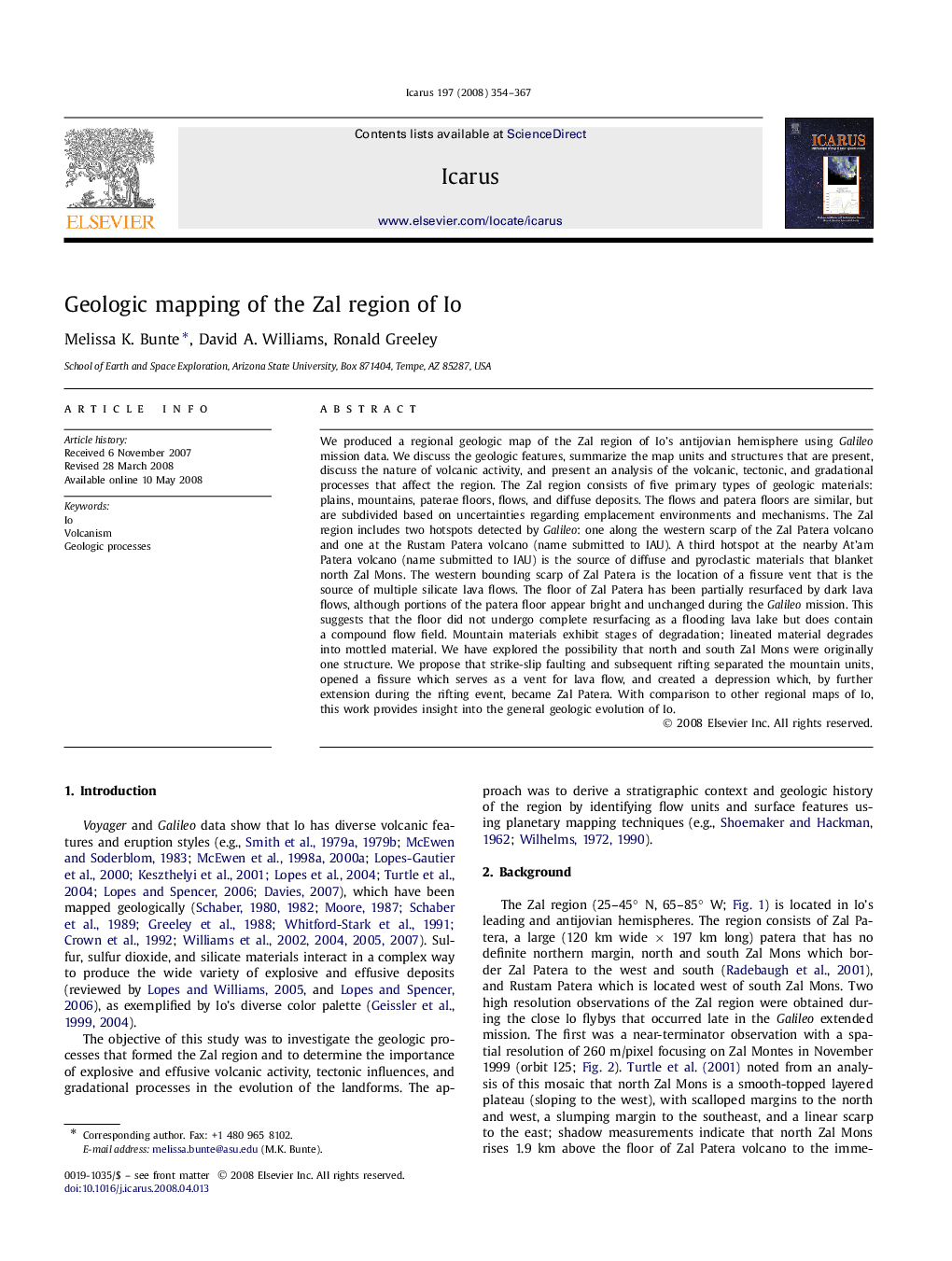| Article ID | Journal | Published Year | Pages | File Type |
|---|---|---|---|---|
| 1775020 | Icarus | 2008 | 14 Pages |
Abstract
We produced a regional geologic map of the Zal region of Io's antijovian hemisphere using Galileo mission data. We discuss the geologic features, summarize the map units and structures that are present, discuss the nature of volcanic activity, and present an analysis of the volcanic, tectonic, and gradational processes that affect the region. The Zal region consists of five primary types of geologic materials: plains, mountains, paterae floors, flows, and diffuse deposits. The flows and patera floors are similar, but are subdivided based on uncertainties regarding emplacement environments and mechanisms. The Zal region includes two hotspots detected by Galileo: one along the western scarp of the Zal Patera volcano and one at the Rustam Patera volcano (name submitted to IAU). A third hotspot at the nearby At'am Patera volcano (name submitted to IAU) is the source of diffuse and pyroclastic materials that blanket north Zal Mons. The western bounding scarp of Zal Patera is the location of a fissure vent that is the source of multiple silicate lava flows. The floor of Zal Patera has been partially resurfaced by dark lava flows, although portions of the patera floor appear bright and unchanged during the Galileo mission. This suggests that the floor did not undergo complete resurfacing as a flooding lava lake but does contain a compound flow field. Mountain materials exhibit stages of degradation; lineated material degrades into mottled material. We have explored the possibility that north and south Zal Mons were originally one structure. We propose that strike-slip faulting and subsequent rifting separated the mountain units, opened a fissure which serves as a vent for lava flow, and created a depression which, by further extension during the rifting event, became Zal Patera. With comparison to other regional maps of Io, this work provides insight into the general geologic evolution of Io.
Keywords
Related Topics
Physical Sciences and Engineering
Earth and Planetary Sciences
Space and Planetary Science
Authors
Melissa K. Bunte, David A. Williams, Ronald Greeley,
